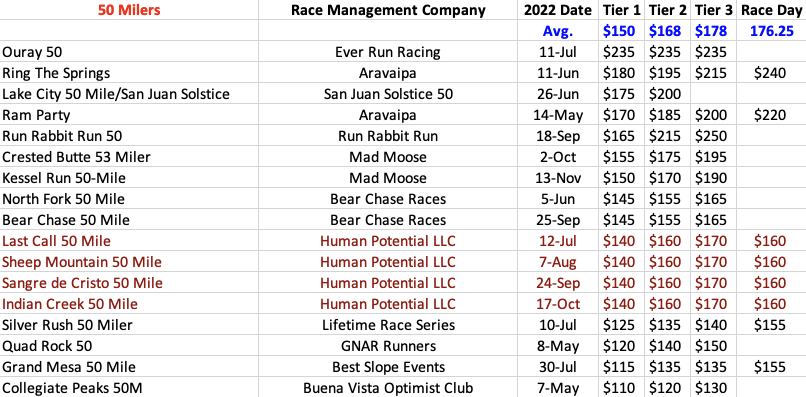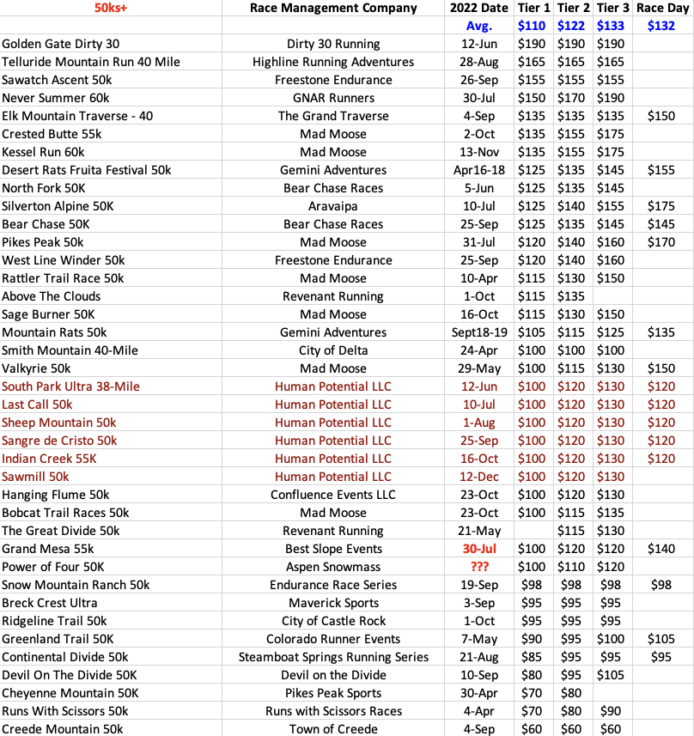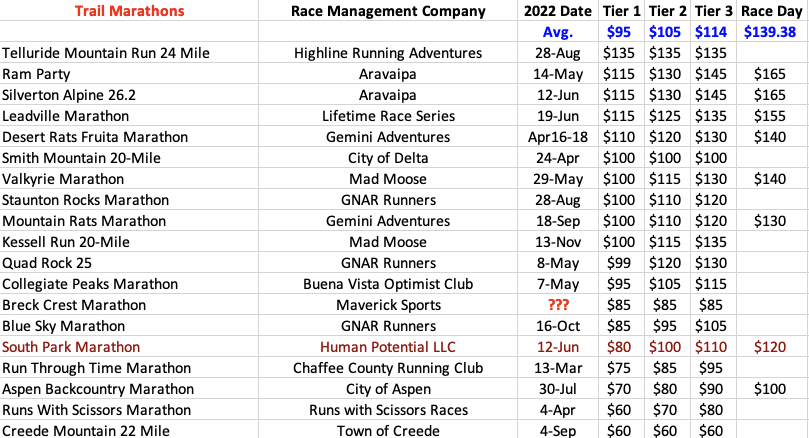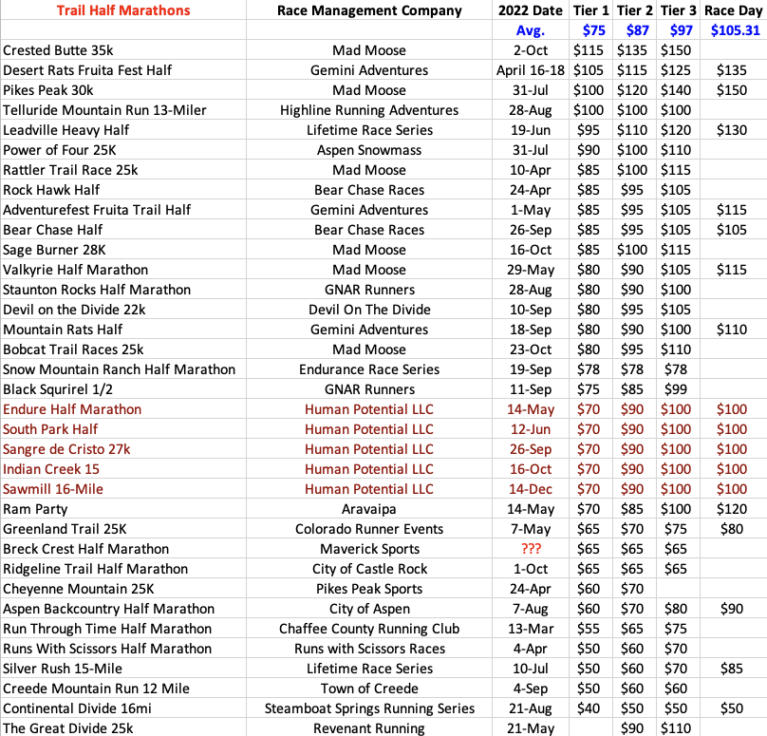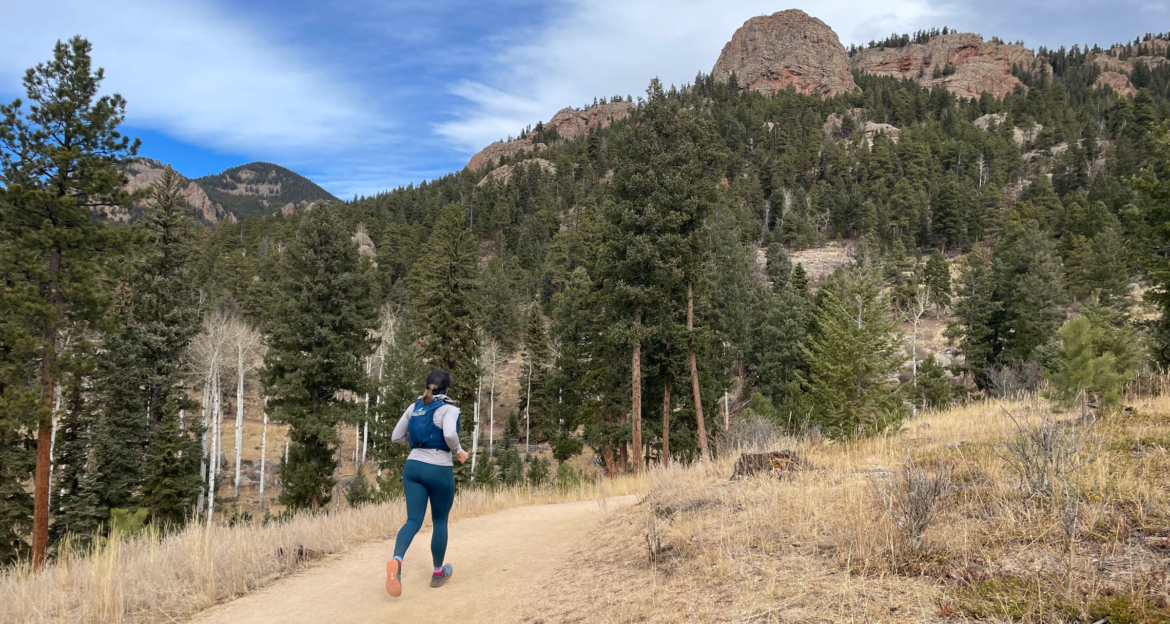By HPRS RD John Lacroix
One of the biggest personal challenges that I faced when I first started The Human Potential Running Series, was setting entry fees. In the many years leading up to my owning a race management business, I had penned several blog posts (not dissimilar to this one) that discussed the rising costs of entry in trail and ultra-running. I was of course one of the more outspoken individuals who was against the commercialization of our sport, and I still am. It went deeper than that though, as on a few occasions I wrote about how I felt it was wrong for individuals to get into race directing as a for-profit venture.
Before you get irreverent with the front loading (and meat and potatoes) of this article, let me explain. When I first got into ultra-running in 2005, a vast majority of events were strictly not for profit ventures. It seemed like just about every race was held to raise funds and/or awareness for some non-profit entity. There really wasn’t any race directors out there doing this to make a living, it just wasn’t a thing yet. Hell, back then the only hydration pack on the market was a Camelbak, ultra-pedestrianism was still a thing, a lot of ultras took place on paved roads, and the sport had yet to experience any kind of “Boom.”
In March 2014 when a group of friends and supporters sat me down to convince me to do this as a full-time job, one of my biggest arguments against doing so was that I would have to “sell myself out.” I’d have to be a hypocrite. I’d have to turn my back on everything I had argued against to become a for-profit full time race director in a sport where that was still very new. In 2014 there were still so few race directors doing this for a profit and full time, that I can still remember and list the majority of those companies that were in play: Tejas Trails (2001), Rainshadow Running (2006), Peak Races (2007), Lifetime Race Series (2009), Aravaipa (2009), The North Face, and Trail Racing over Texas (2014).
Prior to “Born to Run,” owning a for-profit race series just wasn’t really a thing. The North Face, Xterra, and Montrail are all corporate entities that had created a for profit series of their own, only for each of them to disappear as quickly as they had appeared because it more of a pain in the ass than they thought it would be. I also didn’t see the math adding up. Like most of you, I did some runner math, “100 runners x $200 each = $20,000. Take out what I assume are the costs associated with hosting a race and you’re left with little if anything at all.” I had no idea the education I was about to receive by starting HPRS, an education that continues to this day.
On December 5, 2014; which wasn’t long after the completion of HPRS’ first two in person events, I had breakfast with a business mentor who also happened to be an HPRS runner. He made me write the following down on a piece of notebook paper,
“Sat. Dec 5, 2014 8:40am @ Boyer’s So-So Bakery in Thornton, CO
It’s HPRS is a business – Damn It.
->• People pay for services/experiences
• That’s what I want
• That’s what I’ve got
X Signature
Witness Signature”
Yes, 7+ years later I still have that piece of paper. I have it as a reminder. A reminder that when you enter business, you have an obligation to that business. I like to think I took it a few steps further though. I had an obligation to the people I served. I also had an obligation to conduct business in a way that I thought was honest and with integrity. My other mentor is my best friend Nate who lives back in NH. He owns a multi-million-dollar motorcycle business, and when you first walk through the doors to his shop you see a giant banner hanging above that reads “Always tell the truth.” That is the moniker that has led to Nate’s success, and I wanted it to be the moniker that led me to success as well.
I own and run a business. It is for profit, and it resides in a sea of for-profit race management companies in a sport that once saw so few. I still get asked on the regular, “Who does your races benefit?” as if being a non-profit is some kind of requirement to race direction. That first year of HPRS I cannot even begin to tell you the amount of money I left on the table because I felt guilty asking for it. I felt guilty setting race entry fee prices at the Colorado average, which I knew at the time was well above the national average for similar distances. Therefore, the prices I set our series at were much below the average at the time, and it looked and felt like we were the “discount race series.” I gave out countless comp entries to “friends,” and people I had run countless miles of trail with over the first 3-4 years I had lived in Colorado. Early on, I ran the business of HPRS like a charity despite it being a business, but was still able to make a little money while doing so.
To get HPRS off the ground, we were the first for-profit race series in the nation that was publicly funded via a successful Indiegogo campaign. The community of Fat Ass runners I had served for many years gave back by helping jumpstart the HPRS coffers. My wife (at the time) ended up borrowing a huge sum of money from her 401k for our family to be able to survive, while I clawed and scratched HPRS’ way into existence. I’ve never once lost money on a race in my life, but that doesn’t mean I was making a killing our first couple years of existence. While my family struggled and we lived paycheck to paycheck, I was giving entries away and pricing our series well below the average, yet I was still making enough to rationalize staying in business.
All of this is to say that a considerable number of sacrifices were made to get HPRS off the ground and running. It required the love and support of family, and those from the community that already surrounded us. My total profit for the first HPRS event (Tommyknocker Ultras in 2014) was $101, while we made a bit more from the first Indian Creek Fifties less than 2 months later. As much as I hated the idea of being a for-profit race director, as much as I hated asking for money, as much as I hated the average cost of entry in Colorado, I owned and ran a business. If that business was going to survive, I had to do my research, focus on being business minded, and move forward with growing HPRS incrementally and responsibly, while sticking to my roots, values, and personal ethos.
Obviously, I’m sharing some behind the scenes of owning a business and race directing that few individuals are privy to. Few people know that HPRS almost went out of business in 2017, a year where I only paid myself $15,000 total for directing 5 races in Colorado. Few people know that I did yard work and odd jobs for various of my running customers, to make a little cash on the side to survive. That I sold HPRS’ enclosed trailer so that I could pay my rent. That I also drove for Uber and Lyft in order to make ends meet.
It hasn’t always been pretty or a cash cow. Race directing certainly isn’t a get rich quick scheme, and I honestly believe that you need more than a handful of races to truly make it a full-time job, without ripping people off along the way. Hence why some of the for-profit series I mentioned earlier have so many races on their calendar. They need ’em! Then again, if I’m being honest, there are a few race directors out there who price their event(s) so high because they want to make a living off of directing one race. In other words, they’ve created their own get rich quick scheme and you’re paying into it.
I’ve created a few spreadsheets in my day at the helm of HPRS, and two of those spreadsheets are important for market research. The first spreadsheet has an accounting of every single trail race, half marathon or longer, in the state of Colorado and their total number of finishers each year. This spreadsheet counts total finishers for each of these races as far back as 2004 (18 years and counting). This spreadsheet gives me a pretty good look into the participation trends, highlighting races who are flourishing, who’s struggling, who is new, who’s stale, etc. Of course I keep in mind that a bad weather year can significantly impact a race’s finisher rate. It’s not the one-off bad years that stick out, it’s a steady decline over 3 or 4 years that catches my eye. When they do catch my eye, the next question I ask is “Why?”
The other spreadsheet that I created is one that looks at the average cost of entry for each distance, focusing solely on Colorado. This spreadsheet looks at Trail Half Marathons, Marathons, 50k+, 50-Miles, 100k, 100-Miles, and Timed Events. Every year since 2014 I have updated this sheet for every single race to obtain the average cost of entry in each tier of pricing. My only regret is that I have edited the sheet every year, rather than saving it and creating a new sheet the next year. Had I done this, I could report to you the trends in price increases from year to year, over the last 8 years. I think that would really blow your mind.
This isn’t the first time I’ve written about this subject, and it won’t be the last. Truth is that the cost of entry is all over the place in Colorado, and in general is still pretty high compared to the national average. As far as the national average goes, our state has one of the highest supplies of races by number, yet the highest average cost of entry for those races. Typically, when you have the supply to meet demand, fees would decrease because of the surplus in supply, which Colorado has. Unfortunately, Trail and Ultrarunning is no longer a supply and demand sport. It’s a “survival of the fittest” sport and we’re all beating each other up. Colorado’s trail running scene is over saturated. We’re fighting over the same runners, the same volunteers, and now many RDs are raising their rates so that they can maintain the same standard or living as their numbers plummet.
Look, while hosting a trail race or ultra marathon is not cheap, it also doesn’t cost a killing. The longer in distance the race, the higher the profit margin. This is why so many people jump into race directing by putting on a 100-miler fir$t. Some races cost more than others depending on the number of land managers/owners involved, and the number of pockets that need buttering. I think we all can understand that everyone has their fists in the coffers. This idea that it costs tens of thousands of dollars to put on a race though, is a tall tale in trail and ultra running that I wish would go away. Sure, if you’re entertaining 500-1000+ runners, it’s going to cost a lot more to cater to the higher number, but the organizer is still making profit on each runner.
There’s also a higher profit margin when you entertain that many runners. The most expensive race to host at HPRS is the Sangre de Cristo Ultras. With our 200-miler, we’re in the same place for 5 days, and it’s a 6 hour drive from home base. We have to man and supply each aid station for the entire length of time. The year where Sangre welcomed 280+ runners to the starting line for distances of 200-Miles, 100-Miles, 100k, 50-Miles, 50k, and 27k… the entire event cost HPRS around $10,000 total to produce. That’s all in: Food, ice, shirts, awards, buckles, insurance, permits, potties, donations to non-profits, other swag, propane, gasoline, paying three people $500 each to man 3 aid stations for 3 days, etc. All of it. $10,000 All In. Do your runner math; if the average entry fee was $150 per runner x 280 runners = # – $10,000 = $ PROFIT, then ask yourselves… do the prices really need to increase?
Now that 99% of all Colorado trail races have listed or opened registration for 2022, I wanted to once again share with you the average cost of entry for each distance here in this state. But before I do, I want to offer a disclaimer.
This isn’t a post to bring anyone down or trash any other races or series. This is just me presenting to you factual data I have compiled to the best of my abilities (though do not guarantee 100% accuracy) off of each race’s website. The data will show you the average cost of entry for each distance, broken down into the three tier pricing system that just about all of us use. Races that set pricing at one tier only, you’ll see the same price across all tiers. I then sorted the list of races under each tier by price, highest costing race for that distance on top and cheapest on the bottom. I’m not going to comment on the data, I’m certain that you’re all smart enough to come to your own conclusions about the business of trail and ultra running at present.
Last week the HPRS advisory board met, and we determined that we will NOT be raising our rates in 2023. We’re going to stay put. The cost of entry is high enough and our sport is quickly becoming one where only the privileged get to participate. Every few years we look at the average cost of entry, we see it raise, so we raise our rates to catch up to the average. We’ve always been playing catch up at HPRS. We’ve always priced our events at or below the average for similar events at the same distance.
We also have the most generous volunteer program where you can earn discounted and comp race entries to our events by giving back. You can earn a straight up comp entry by doing a day of trail work with us. We run the biggest sale of the year with our RegFest event, where everyone saves 10% off race entries and HPRS Members save more. We offer a 20% discount to military members. I’d like to think that we continue to do our part in making trail and ultra running a sport that is accessible to all regardless of your socio-economic status. It is a business. We’re okay with putting on great events for our community without making a killing. We do it because we love it, because we love you.
Finally, I want to level with you and speak truth to some bullshit. “Covid” is not a valid reason for races raising their rates exponentially in 2021, because as we all know, there is a no-refunds policy sport wide and many RDs held on to your cash without ever putting on a race. Many of those races were cancelled well enough in advance that none of your entry fees were spent on race related expenses. The excuse that they incur expenses many months in advance, is true in some cases, but we’re talking about a few hundred dollars and not thousands.
“Inflation” is also not a valid reason for races raising their rates in 2022. 400 Runners x $20 each = $8,000. Inflation is not costing races an extra $8,000 per race, it’s costing an extra $2-4 per runner at most. Go back to the paragraph above talking about our most expensive race to host. There are race directors out there who put the onus on you to bail them out for their own fiscal irresponsibility, or who simply set the price high because they know you’ll pay it. I take an immense amount of pride in knowing that I served you, made it accessible for you, and I got my hands dirty to make ends meet when it wasn’t going well. It was my responsibility, not yours. I didn’t make YOU pay for it, I got out my rake and did yard work for it. I got in my car and drove a taxi for it. THAT is something that sets HPRS a part.


